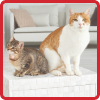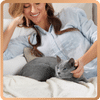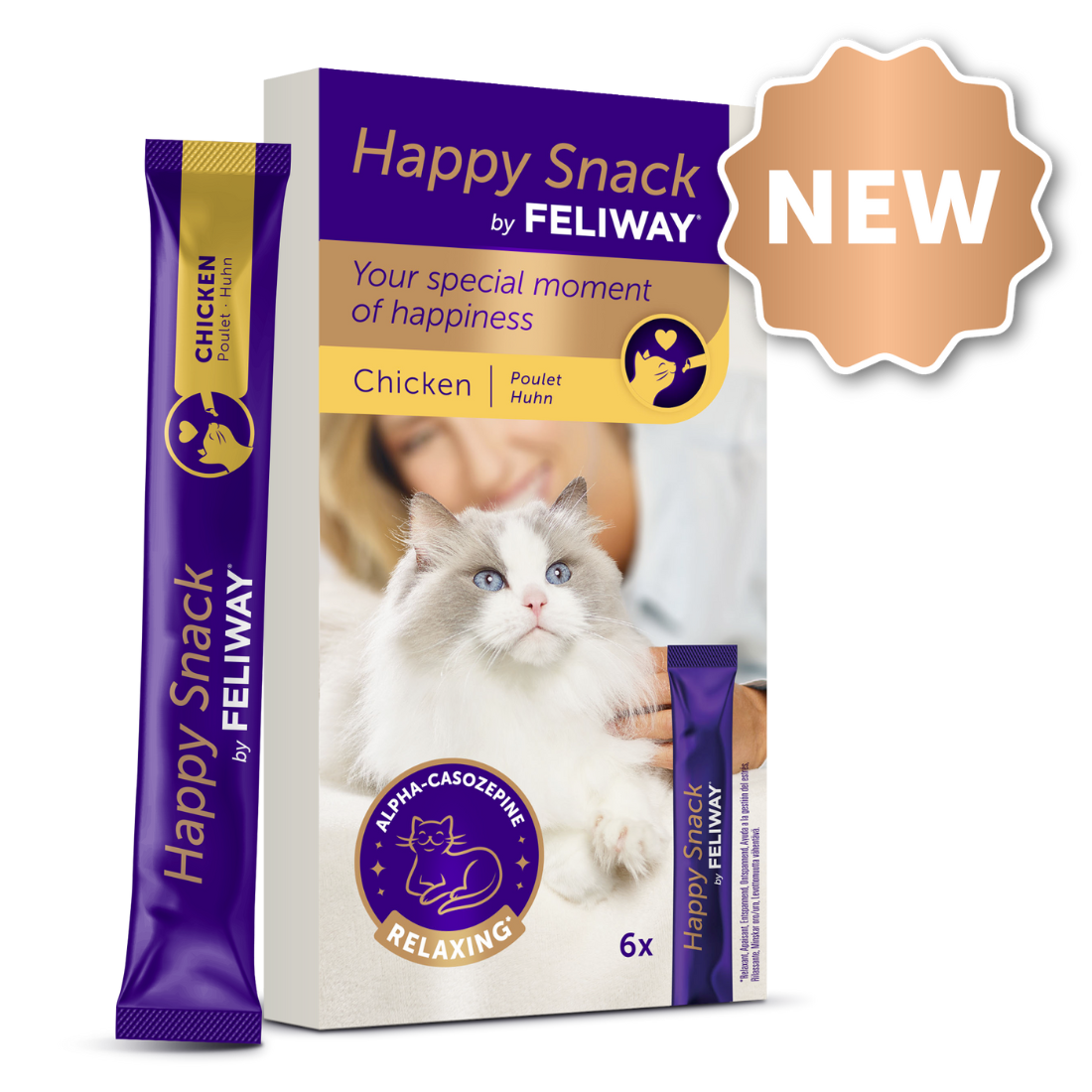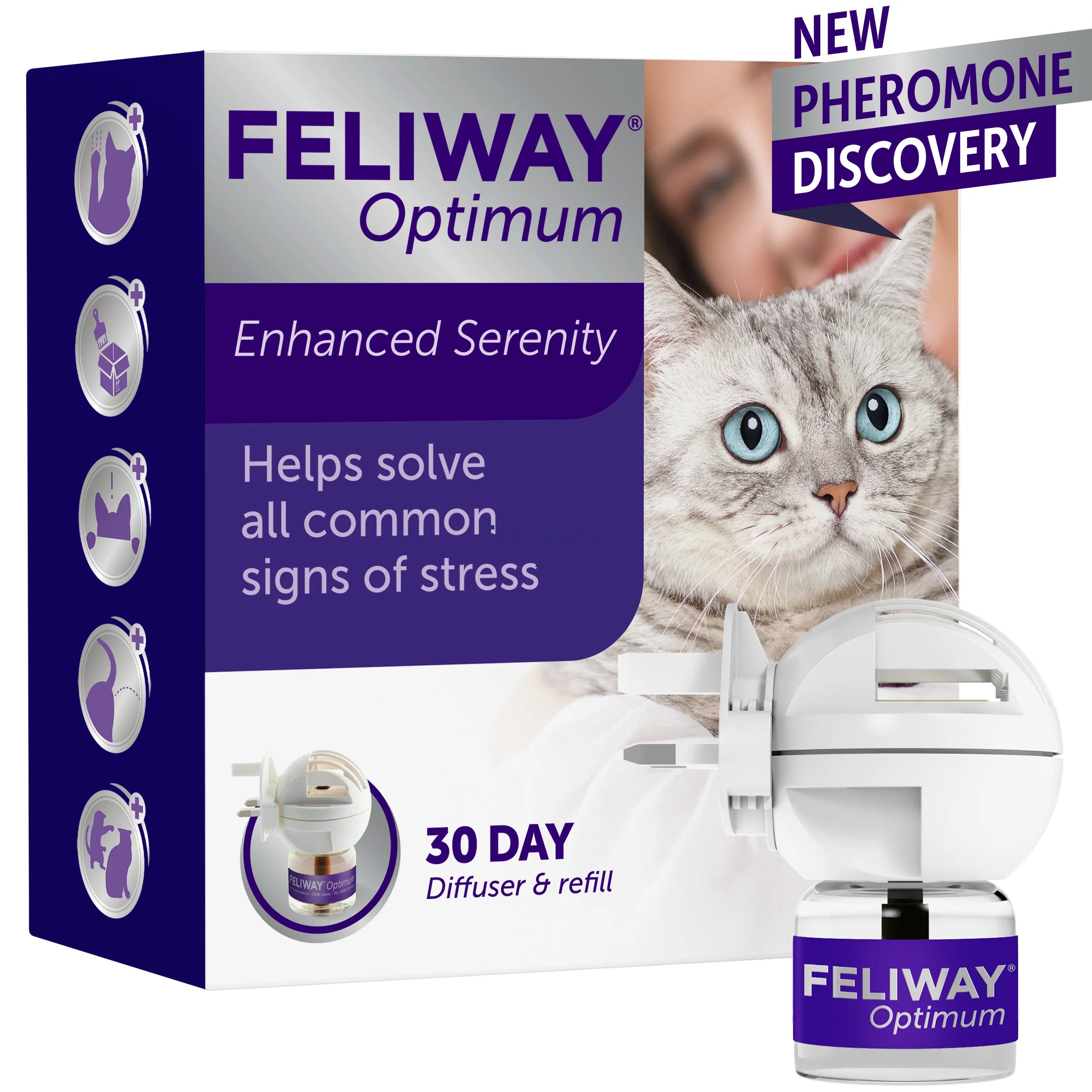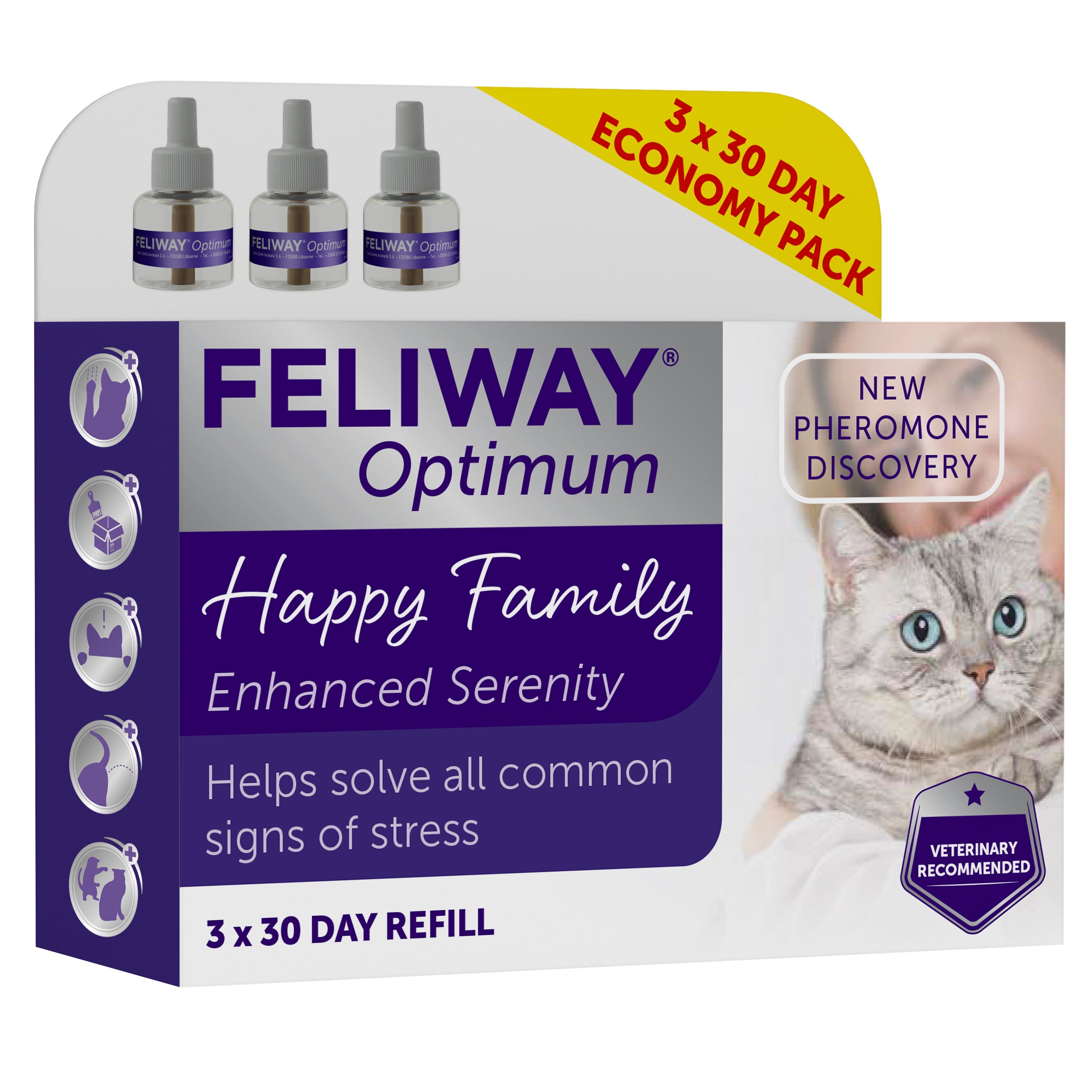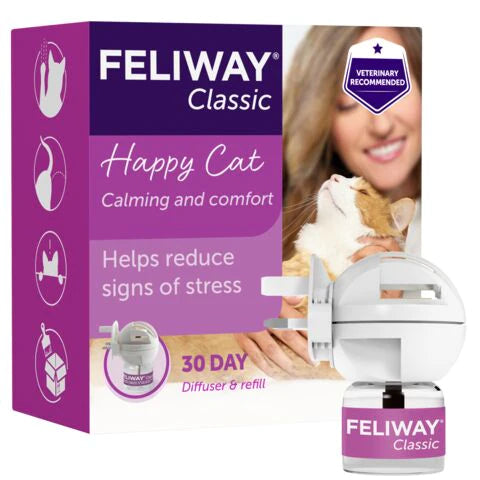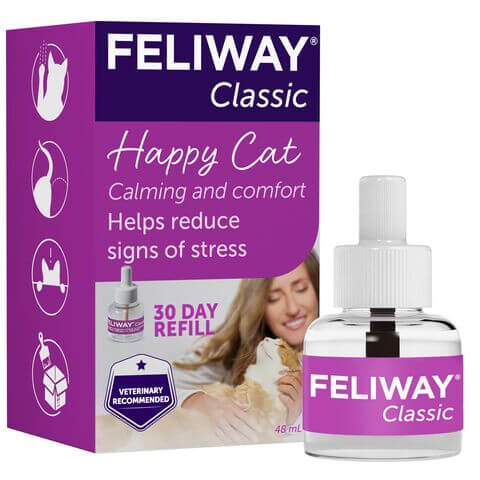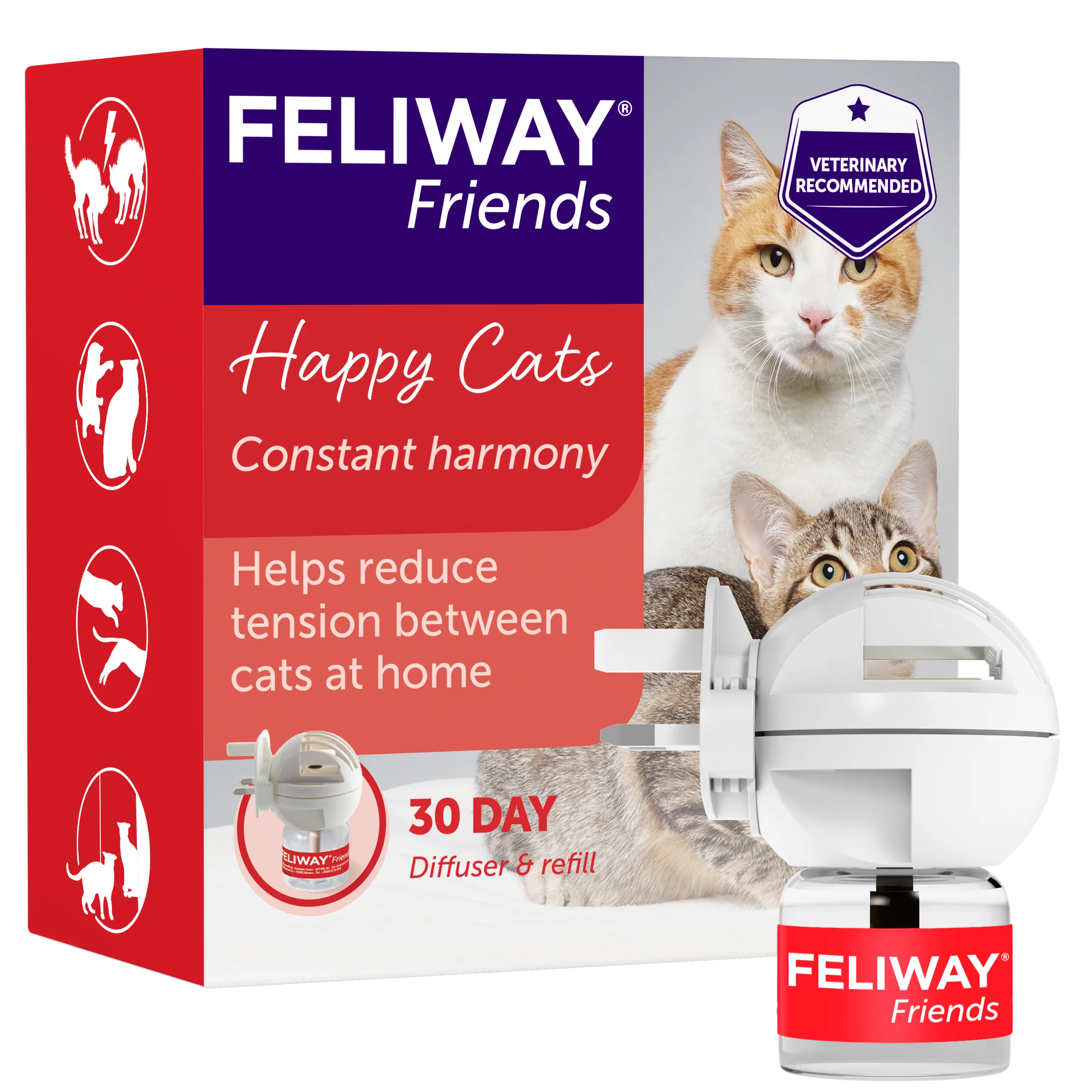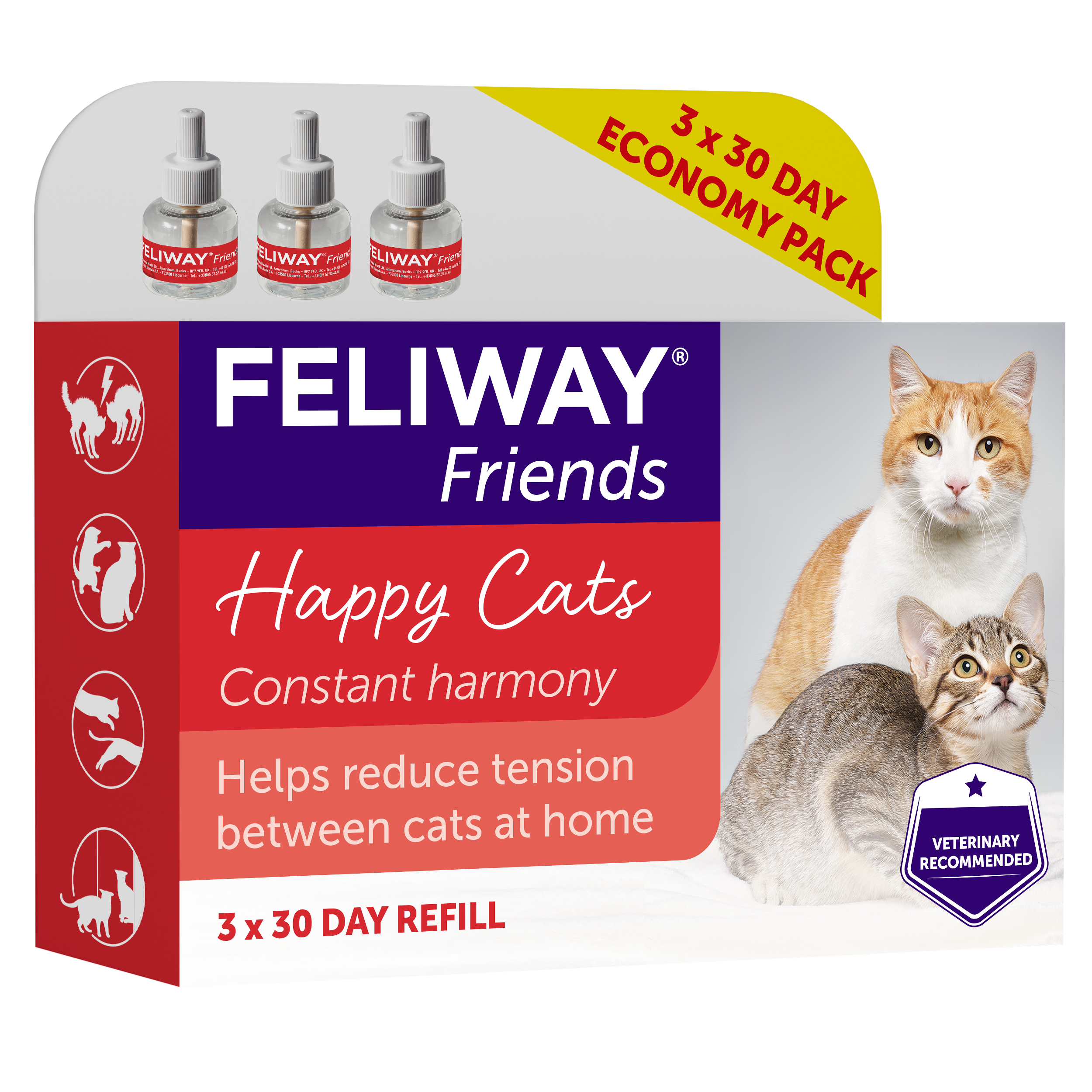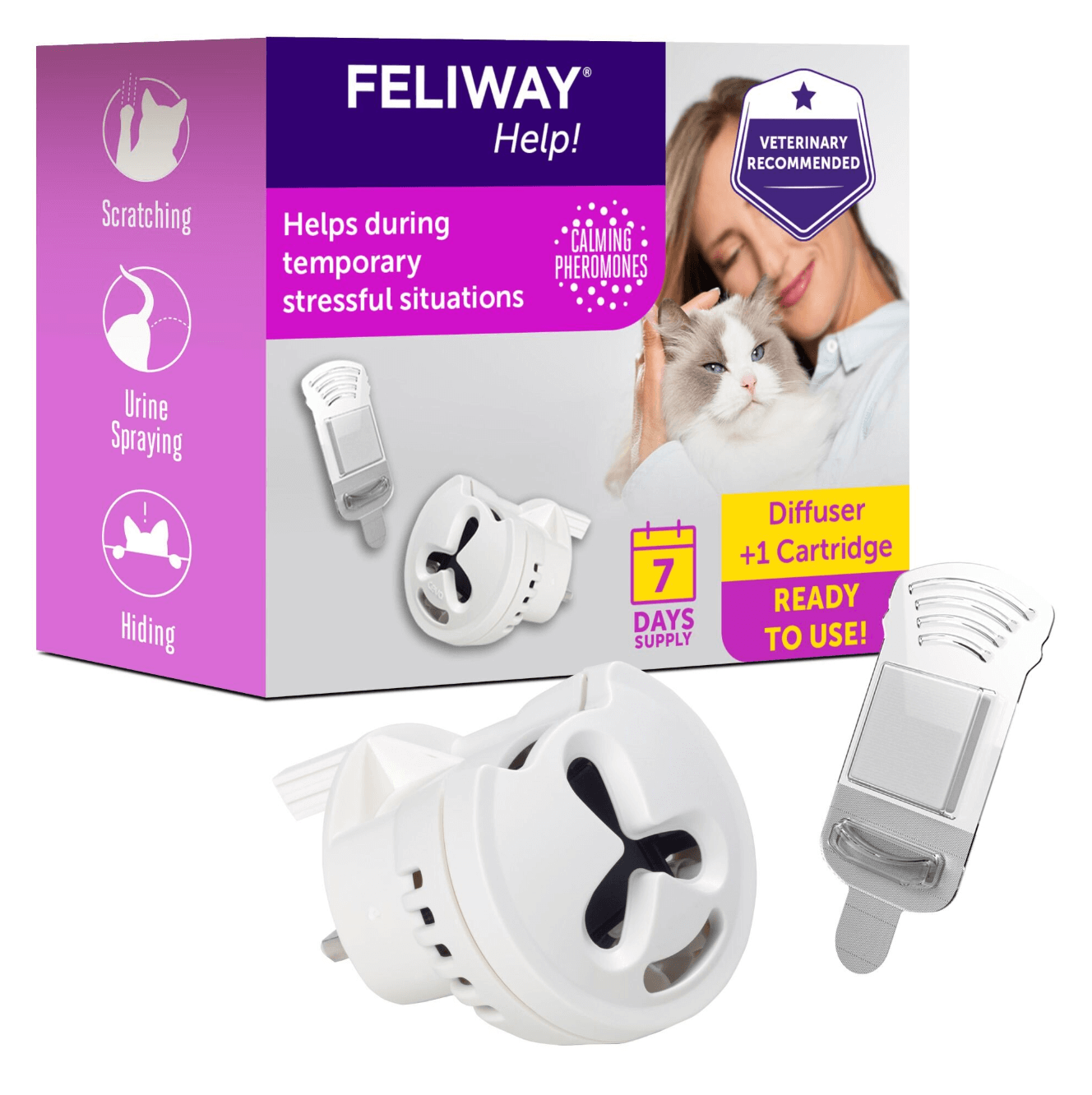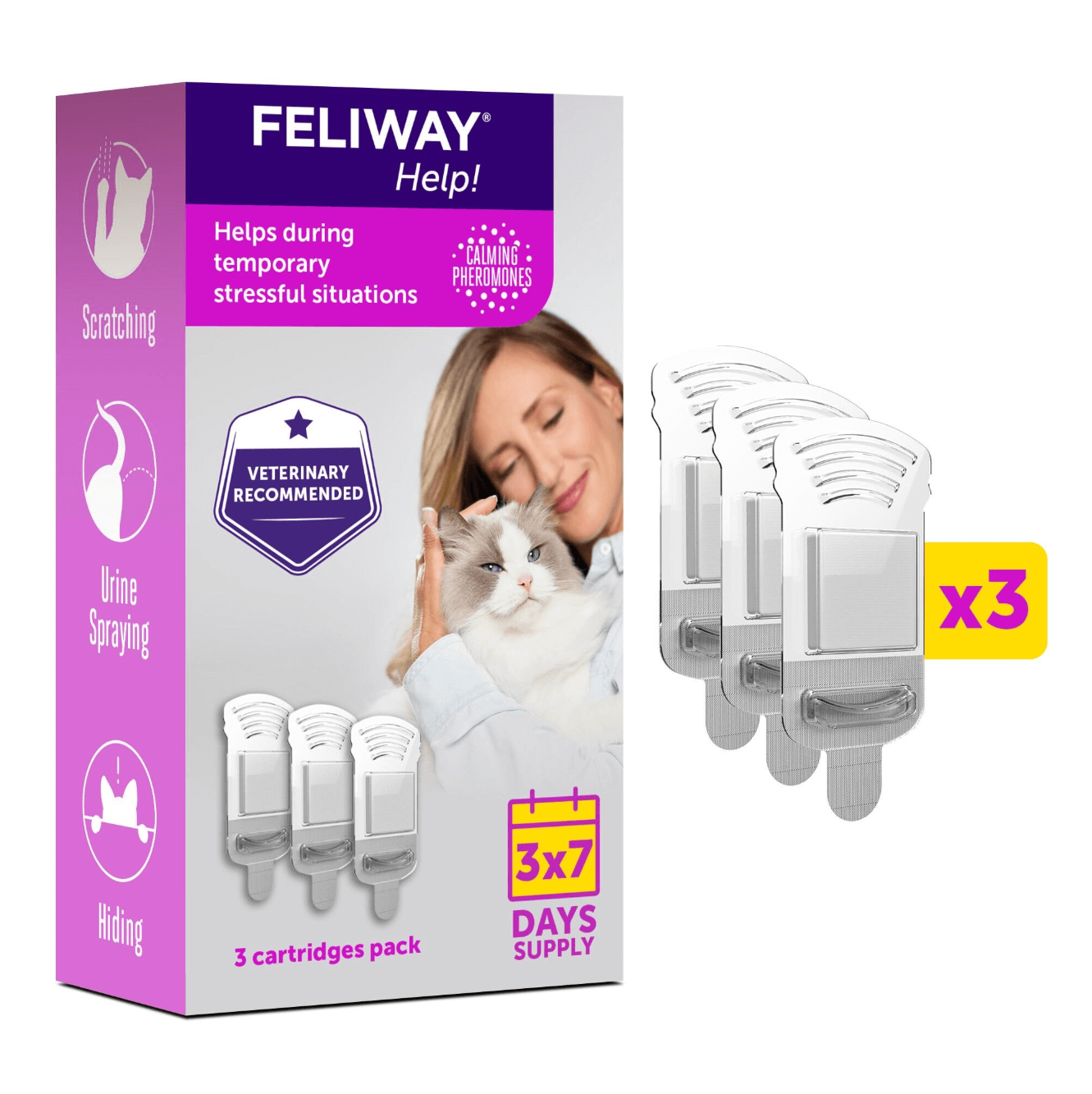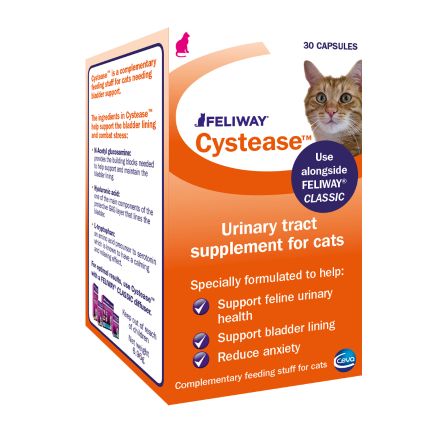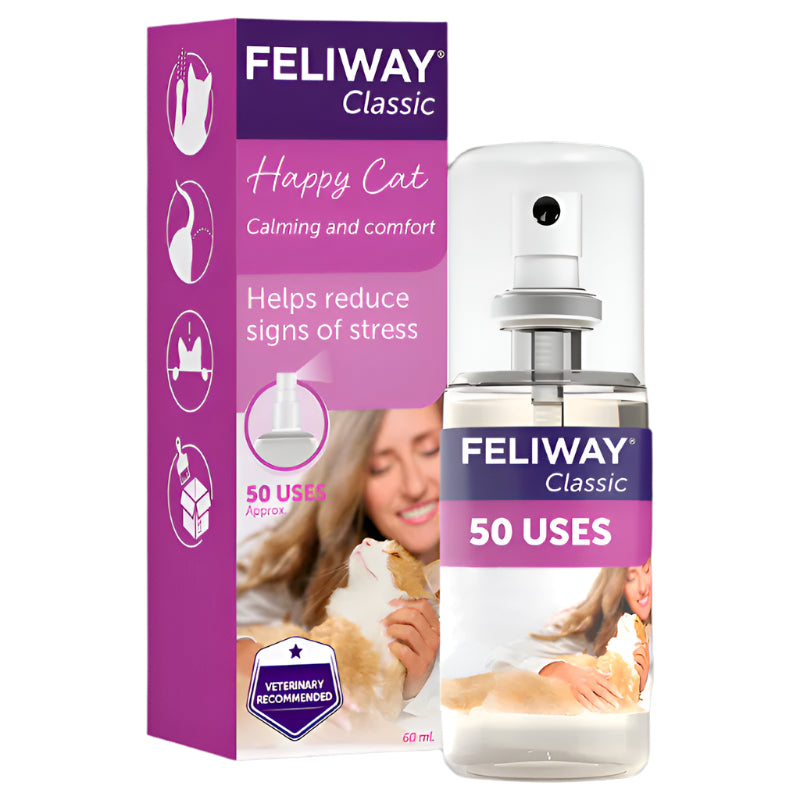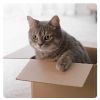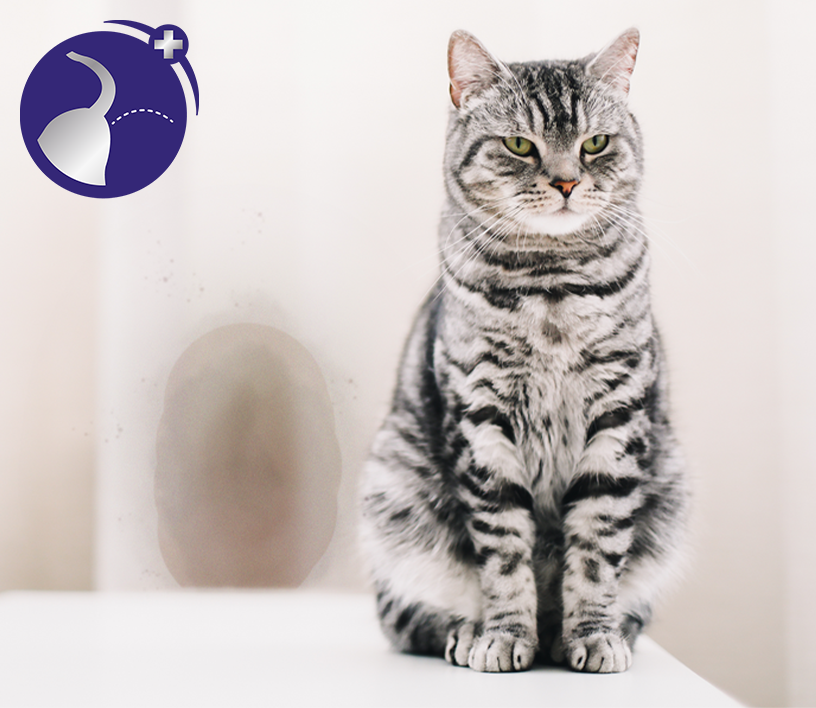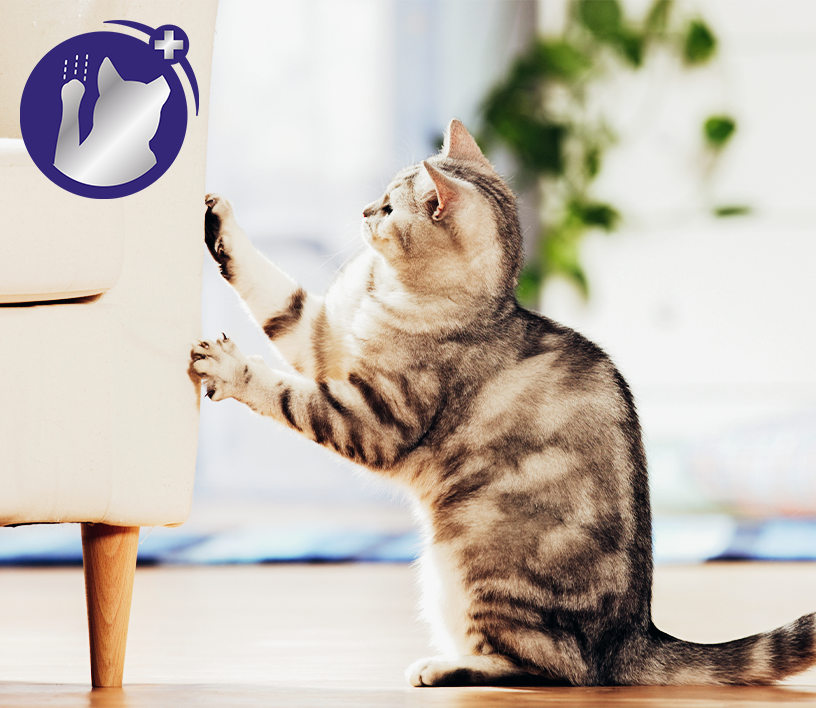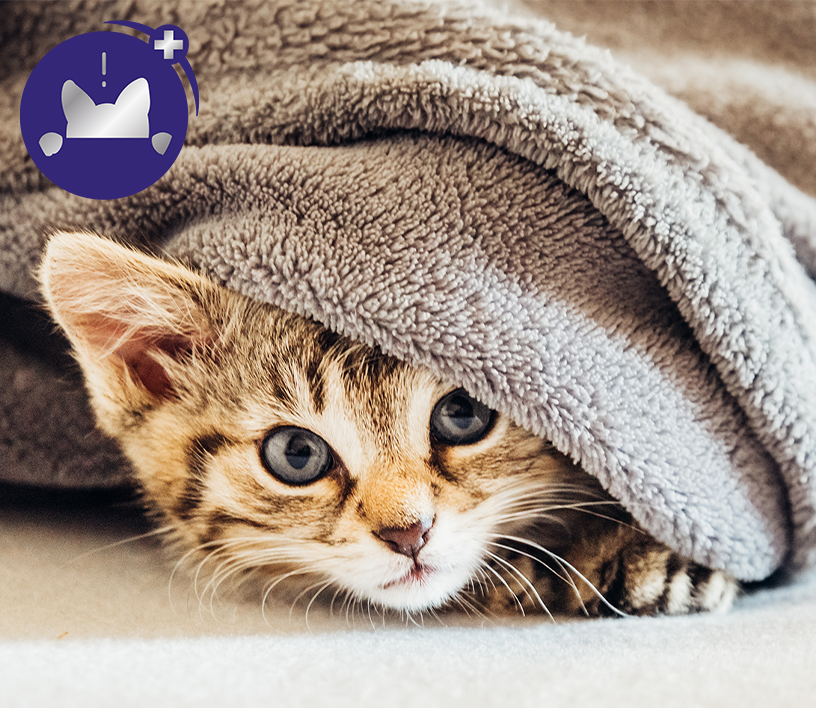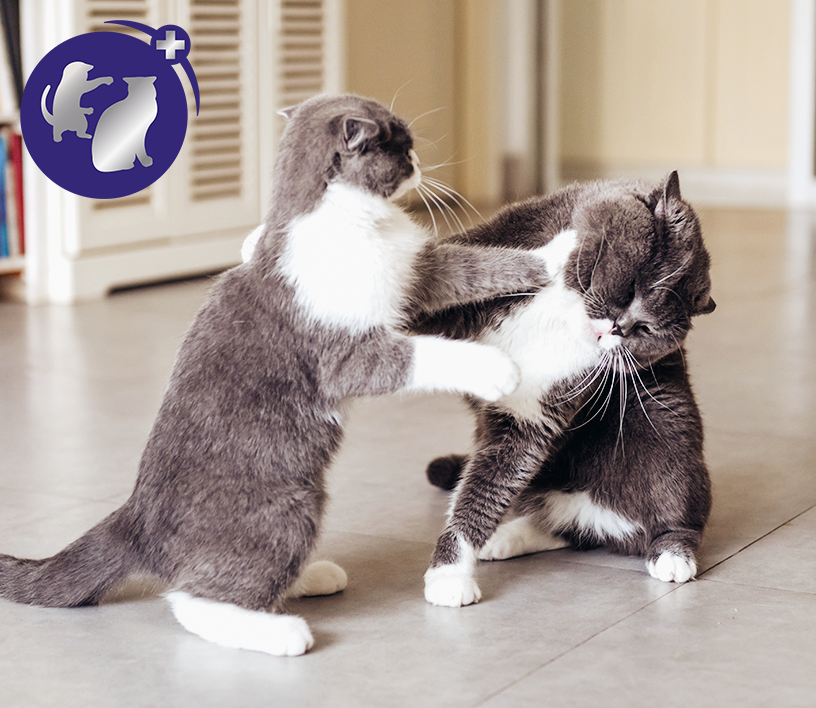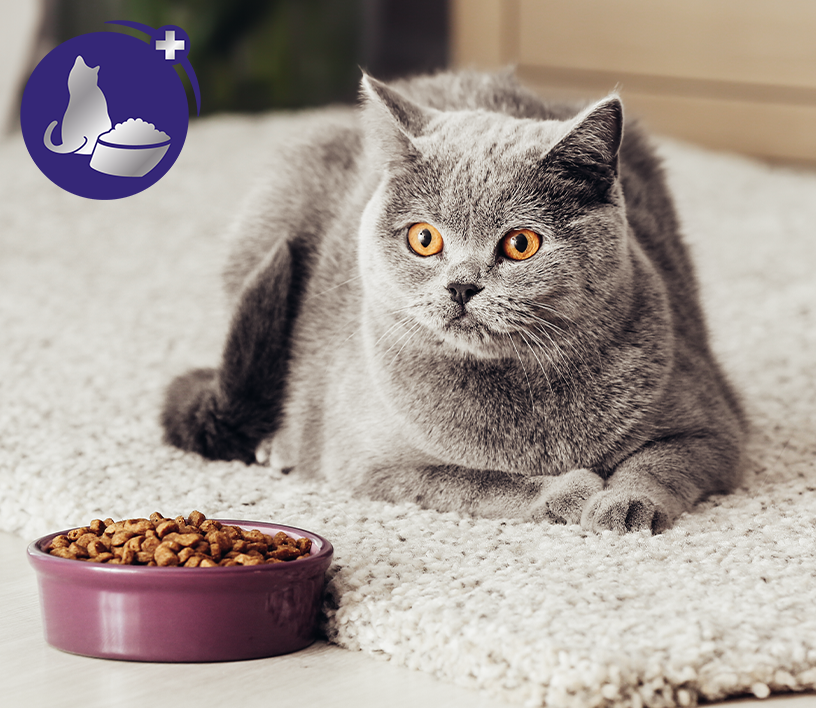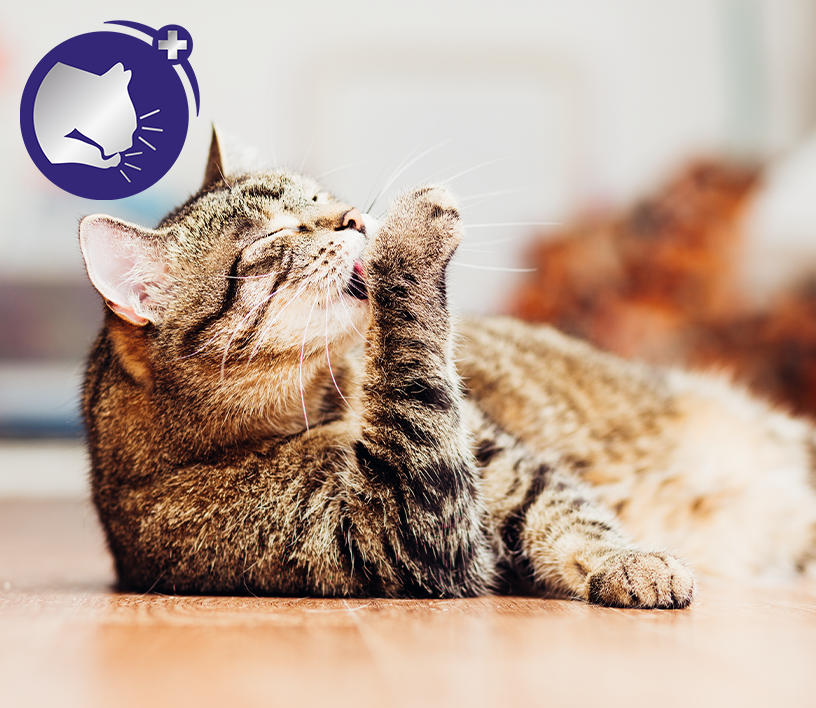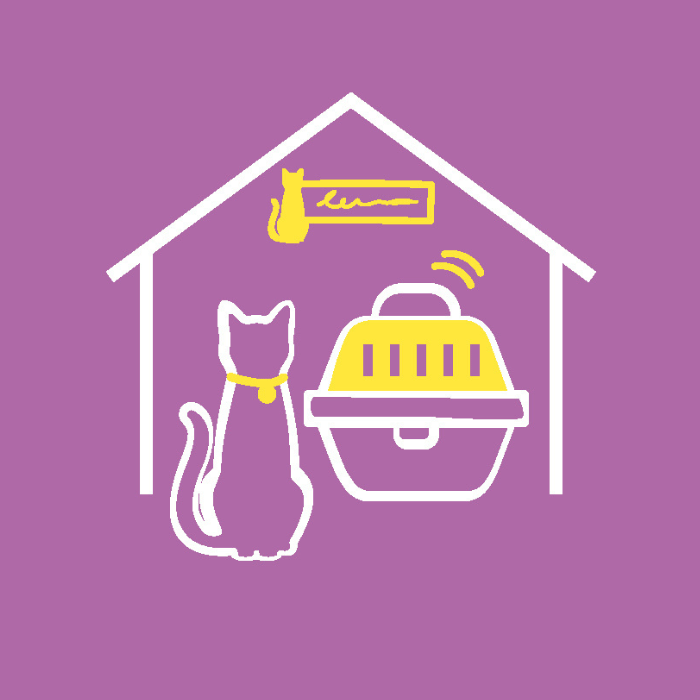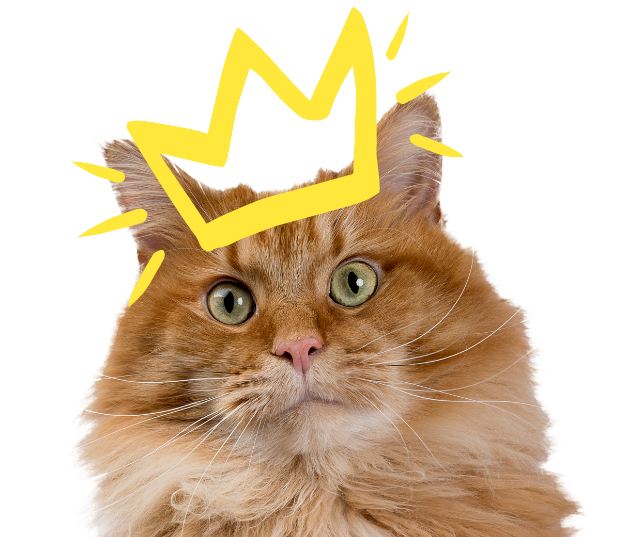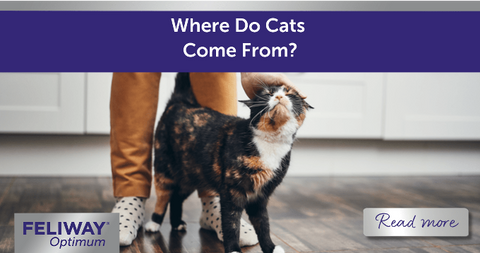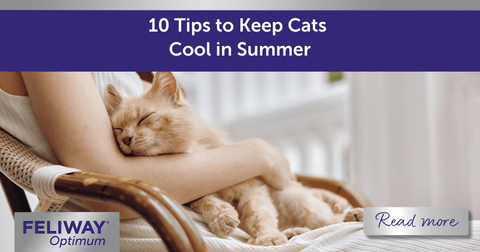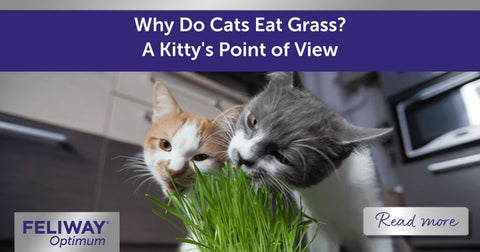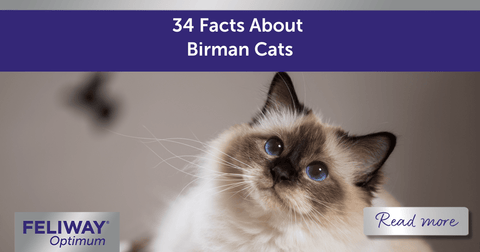
Happy Cat Expert: How to Feed Cats in a Multi-Cat Household
If you have more than one cat in your house or are thinking of introducing a new feline friend into your family, you may be wondering if they will be happy to share their food bowls - after all your cats get along OK, so it would be convenient if they would share their resources, right? Unfortunately, not always as most cats don't like to eat together!
All cats are different and, although some may be indifferent about how their food is provided, most domestic cats still like to eat alone - just like their ancestors, the African Wildcat, that hunted for their survival. This was a solitary activity where they caught food for themselves.
So, in multi-cat households, particularly if there is tension between cats, the way food is provided requires consideration and can significantly influence your cats' social behaviour. If their provisions are not quite right, it can contribute to the development of problematic behaviours, damage the relationship between cats, and have a negative impact on their welfare.
By Lucy Hoile our FELIWAY Happy Cat Expert and Cat Behaviourist
Do Cats like to Eat Together?
In the wild, free-living cats are in total control of their feline interactions and can choose to share a territory with other cats - in many cases without any problems. This situation is one that many owners aspire to have in their own multi-cat household, so reflecting this and giving your cats a choice over when they interact with each other is essential.
Through domestication, much of a cat's social behaviour has changed over the centuries and domestic cats can now live happily with other cats, humans and other animals; they will happily eat together if food and shelter are plentiful. However, if each cat is responsible for their own survival, they will generally not be happy to share food with other household cats, other than with young kittens. If there is not enough food for each cat, tension increases, and can lead to problematic interactions between them.
Feeding your furry friends together, forces them to congregate in the same area and access the food while it is fresh, removing any element of choice. This lack of control over their interaction is the exact opposite of how the free-living cats live.
One cat (or both) will likely feel uncomfortable in such close proximity while eating and competition between them will often increase, leading to overt antagonistic social behaviours including hissing, swiping and growling, as well as more passive behaviours such as staring and blocking access to the food, to the detriment of the other cat.
Competition for Food can Lead to Problems
This situation may also lead to problematic feeding behaviours like eating as quickly as possible, driving another cat from their food bowl before finishing their own and/or leaving the food before they are satiated. This usually induces a negative emotional state and if this interaction is repeated at every feeding time, it could extend to other non-eating interactions at other times of the day; competition for food can increase territorial behaviour such as aggression between cats, around the food bowl and/or at other times, or urine marking inside the home as an attempt to take back some control over their territory.
Problems relating to stress and anxiety can also develop, such as toileting in inappropriate locations, excessive grooming and increased nervousness/lack of confidence, as well as stress induced physical conditions.
This situation can occur in both existing multi-cat households and when introducing an additional cat to the household. Common advice for introducing cats is to encourage them to eat together and it is considered a sign of a positive relationship when they do so. This is unlikely to be the case and emphasis should be placed on allowing the new cat to develop their own small territory within the home, with all its essential needs met in this space in terms of food, water and other provisions.
Meetings can then be managed carefully, with cats given the opportunity to interact if they choose to do so, without feeling conflicted about wanting food.
Top Tips for Feeding Cats in a Multi-Cat Household
In both new introductions, or existing multi-cat households, high value food or treats can be used to help facilitate the development of a positive relationship by distracting the cats and preventing interactions becoming too intense, and rewarding calm behaviour in the same room. However, food should not be used to lure them closer together, but only used to keep cats in control and their feeding behaviour as natural as possible.
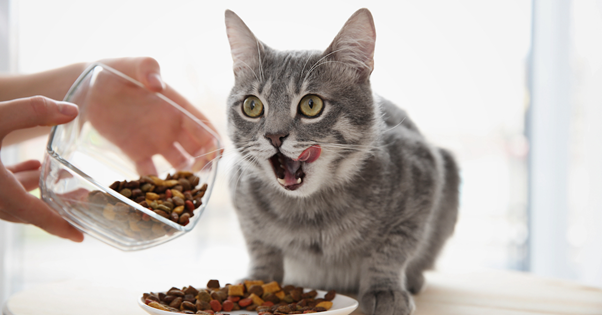
Provide Multiple Places to Eat
To maintain a positive relationship between cats, multiple stations of food can be positioned in completely separate areas of the home and an ample amount of food provided so it is not perceived as a limited resource. Try to accommodate where each cat would prefer to eat based on where they spend lots of their time and make sure you position food in a quiet, low-traffic area.
Feed them small, regular portions frequently throughout the day which can be helpful to reflect their natural eating habits and reduce the level of anticipation prior to food being placed down once or twice a day.
Also, if you have other animals in the home (like a dog) make sure your cats' food bowls are placed in a high position out of the dog's reach - cats often like to perch up high anyway where they feel secure and can survey the room!
This, along with maximising provision of other resources (water sources, toileting areas, resting areas, scratch post, toys etc.) gives the cats sufficient opportunity to have some alone time. Ensuring interaction is on their own terms reduces potential tension, allowing them to interact when they feel ready is more likely to ensure kitty interaction remains positive.
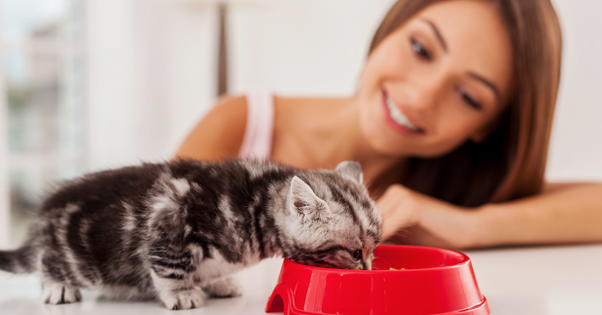
The Way to a Happy Multi-Cat Household!
Given the impact on feline physical and mental health, making a few minor changes to how cats are fed can make a significant positive influence on their welfare and feline relationships. The absence of problem behaviours and development of a positive bond between cats can make cat ownership in a multi-cat household a much more enjoyable experience.
To help your feline friends feel more relaxed and comfortable, use FELIWAY Optimum in each of your cat's territories within the home. FELIWAY Optimum helps cats with more signs of stress, in more situations, and calms cats better than ever.
Lucy's top tips
- Remember eating is a solitary activity for cats.
- Provide multiple food stations throughout your home to help them eat apart.
- Try to accommodate where each cat would prefer to eat if they were able to choose.
- Provide food in quiet areas, in a room where the cat enjoys spending time and they are unlikely to cross paths with another cat.
- Use tasty food to reward calm or friendly social behaviour between your cats.
Avoid using food or treats to lure your cats together.
Would you like to understand more about cat behaviour or are interested in how you can continue to build your bond together? Find all our experts’ articles online! You can also stay up to date with all our latest tips and advice by signing up to our newsletter.


